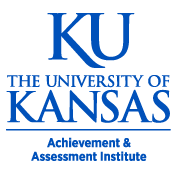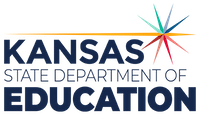Reimagining Instruction, Redefining Assessment
In education, one size does not fit all. Not all learners learn the same material in the same way, at the same pace, or even in the same order, and different learners bring with them different educational backgrounds. Students, then, are best served by instruction that is tailored to their own unique needs.
The Enhanced Learning Maps project facilitated personalized instruction.
Teachers are best positioned to personalize their instruction when they can observe students actively engaged in demonstrating their learning progress. But in order to adjust their instruction appropriately, teachers must first analyze each student’s level of understanding to determine what particular misconceptions or knowledge gaps he or she may have.
This is a difficult task that some teachers are unprepared for. Teachers may benefit from supportive tools to help them connect particular observations of student thinking with the knowledge or misconceptions those observations may indicate.
The Enhanced Learning Maps project was designed to provide precisely these tools.
Enhanced Learning Maps resources help teachers tailor their instruction to meet individual students’ needs so that all students may reach the highest levels of success. More specifically, these resources provide teachers:
1. A guiding framework: Our perspective on formative assessment partnered with the rich information displayed in our learning map models can guide teachers’ instructional practices and general approach to learning and assessment.
2. Specially designed tools: Our innovative learning map model illuminates alternate pathways different students may take to learn material. The model also makes clear the prerequisite knowledge necessary for full understanding of a given topic, which helps teachers more easily identify how they might revise their instruction to help students bridge knowledge gaps and achieve learning goals.
Enhanced Learning Maps resources reflect a body of academic research about effective pedagogy.
Learning map models belong to a broader category of organized learning models, which are tools for depicting how understanding of a particular body of knowledge develops over time and experience.1 Concept maps,2 learning hierarchies,3 construct maps,4 and learning progressions5 are all models that define what students must learn, and each can be used to map out optimal learning sequences.6 Additionally, learning trajectories have been used by mathematics teachers to plan instruction that is sensitive to student development.
The learning map model used by the Enhanced Learning Maps project was adapted for use in general student populations from a model first created by the Dynamic Learning Maps® Alternate Assessment Consortium to meet the specific needs of students with significant cognitive disabilities.
DLM® researchers considered the results of a breadth of empirical studies that investigated how students learn particular concepts and skills, organized those results into networks of interconnected learning progressions, and illustrated those progressions as a map.
These initial maps were then refined to model recommendations about what students should learn and be able to do from professional bodies such as the Principles and Standards for School Mathematics7 and the Common Core State Standards.8 The result is a collection of maps, each focused on a particular standard, that teachers can consult as they consider student learning.
The project was funded by a four-year, $5.8M grant awarded by the United States Department of Education; these funds are administered by the Kansas State Department of Education.The ELM research was conducted by researchers at the Achievement and Assessment Institute at the University of Kansas. The ELM project confirmed the value of learning maps with supporting resources for use by classroom teachers for ongoing formative assessment of instruction and learning.



- Gierl, M. J., Wang, C., & Zhou, J. (2008). Using the attribute hierarchy method to make diagnostic inferences about examinees’ cognitive skills in algebra on the SAT. The Journal of Technology, Learning, and Assessment, 6(6), 4-49.
- Baroody, A. J., & Bartels, B. H. (2001). Assessing understanding in mathematics with concept mapping. Mathematics in School, 30(3), 24-27.
- Gagné, R. (1968). Learning hierarchies. Educational Psychologist, 6, 1-9.
- Wilson, M. (2009). Measuring progressions: Assessment structures underlying a learning progression. Journal of Research in Science Teaching, 46(6), 716-730.
- Popham, W. J. (2011). Transformative assessment in action: An inside look at applying the process. Alexandria, VA: ASCD.
- See reference 4.
- National Council of Teachers of Mathematics. (2000). Principles and standards for school mathematics. Reston: VA: Author.
- Council of Chief State School Officers/National Governors Association. (2010). Common core state standards for mathematics. Washington, D.C.: Council of State School Officers and the National Governors Association Center for Best Practices.
